Design Q&A: Max Lamb
By connecting art and anthropology to materiality and improvisation, furniture designer Max Lamb creates work that embodies new histories of craft.
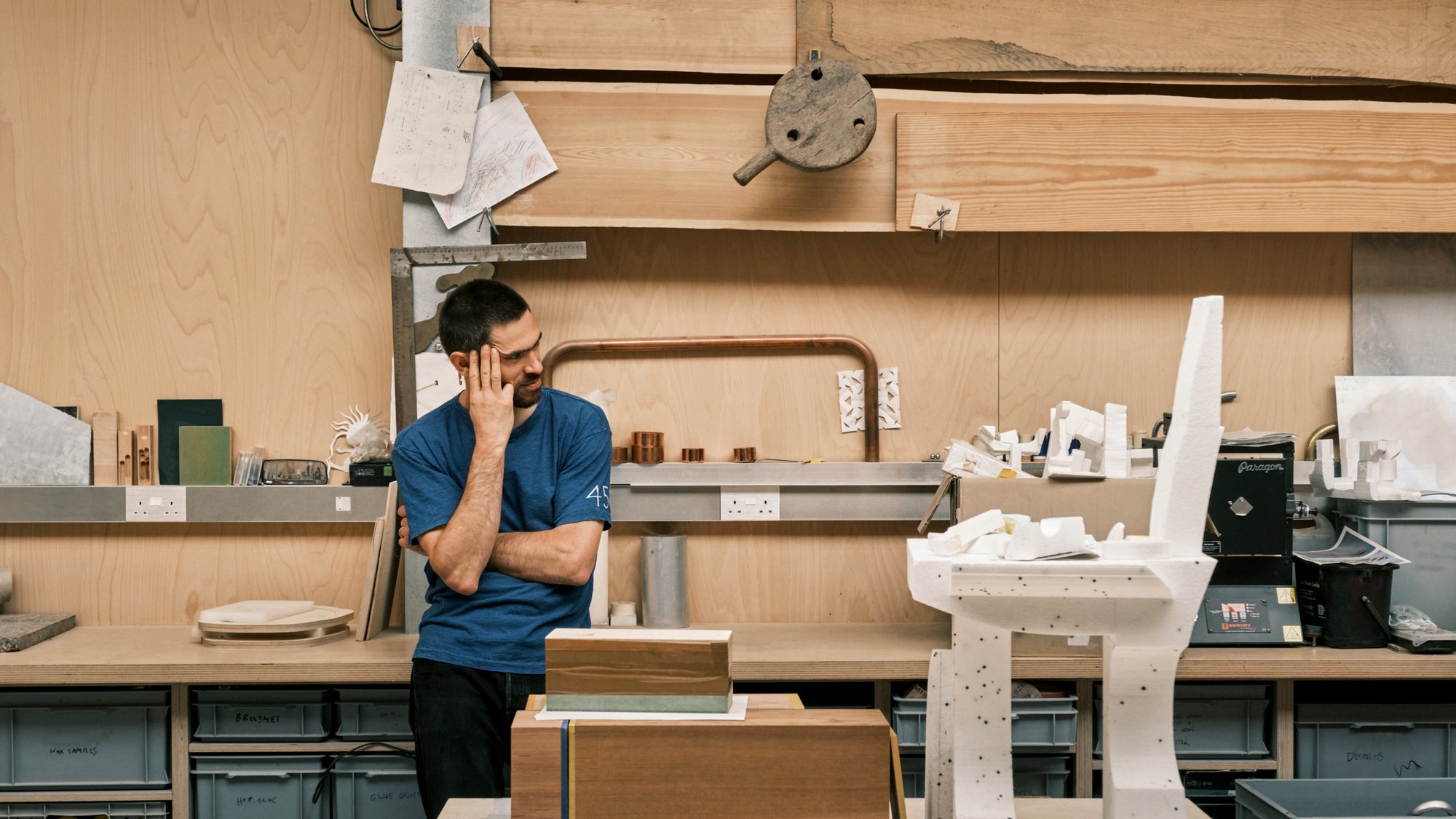
Max Lamb stands in his London studio behind a maquette for one of his 6x8 Chairs, made from a single piece of western red cedar.
For a 2020 project, Max Lamb handmade 60 chairs from slabs of polystyrene over the course of a three-day marathon. The chairs explored the tension between individual quirk and mass-produced form, the way that a singular maker can mimic industrial methods yet push against them. “If you look at the silhouette of every one of those chairs, you will see repetition,” says Lamb on an afternoon in his airy London studio. “If you look at the micro, you will see individuality.”
The designer’s specialty is finding the individual possibilities in singular concepts and thematic variations, as evident in 40 chairs, featuring wildly eclectic designs and materials, showcased in his 2015 “Exercises in Seating” exhibition. Working with stone, wood, textile, polystyrene, and all manner of metals, Lamb has crafted a variety of creations that blend design, art, and functional object into striking new typologies: seating hewn from solid granite, furniture “grown” from copper nanocrystals, tableware rendered in black basalt and white fine bone China.
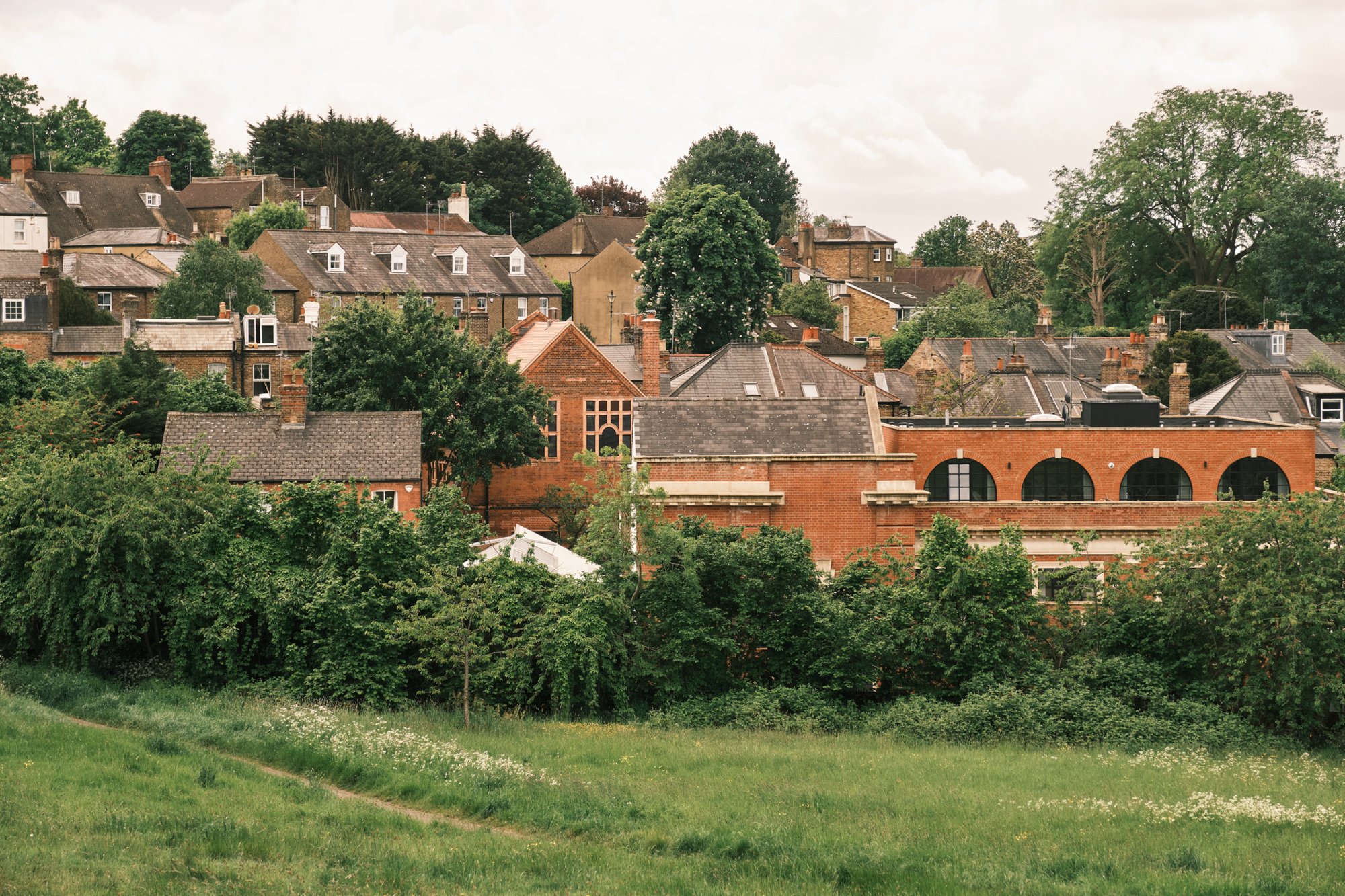
Lamb’s residence, originally a church hall built in 1884, is behind his workshop, a silver-roofed structure visible behind the greenery center left.
While making objects, Lamb’s creative touchstone is the act of discovery, which emerges from explorations that often feel like performance art—or perhaps performance design. The inclination forged the genesis of his career: In an early project, he sandcast a stool on a Cornwall beach, working around the rhythm of the tides (and pedestrian beach traffic) to dig a mold into the sand, melt pewter with a portable propane stove, and pour the liquid metal into the exhumed mold. Three days passed with Lamb repeatedly carving and casting before he completed his first version, an abject failure. He didn’t achieve a “successful” outcome until day five. “I enjoy being in control whilst also being out of control of the processes,” he says. “That’s perhaps where the playfulness and whimsy comes in, making fairly significant design decisions in the act of making.”
As much as Lamb embraces playfulness, he also thrives in the realm of contemplative discovery. The designer is continually intrigued by the rigid operating procedures of industry, and he’s started projects after choosing a production process—sandcasting, in the case of the “beach stool”—that he examines with an anthropological rigor. He considers how the existing vocabulary of the method reveals layers of history, culture, geography, climate, and more, and how a reconfiguration might yield fresh perspectives and new forms. He even composes zines, released in collaboration with publisher Dent-De-Leone, documenting his detournement of the process. For his second edition of “Exercises in Seating,” in 2016, he applied a rethink to rug making, taking yarn made and dyed by legacy British manufacturers to produce rugs using a high-tech robotic tufting machine. “There are so many rules in industry,” he says. “Some processes are limited by people, some are limited by process. If you take some of those elements back into your own control, a lot more is possible.”
Lately, Lamb is pushing his yen for deconstructive construction into his own design process. He has been working on a project in which a single piece of western red cedar wood is hand-cut, without jigs or guides, into pieces and assembled into a chair; the design feat requires a painstaking consideration of geometry and physics that Lamb describes as “three-dimensional jigsaw puzzles.” “It’s so much like a game of chess,” he acknowledges. “Because every cut has a consequence.”
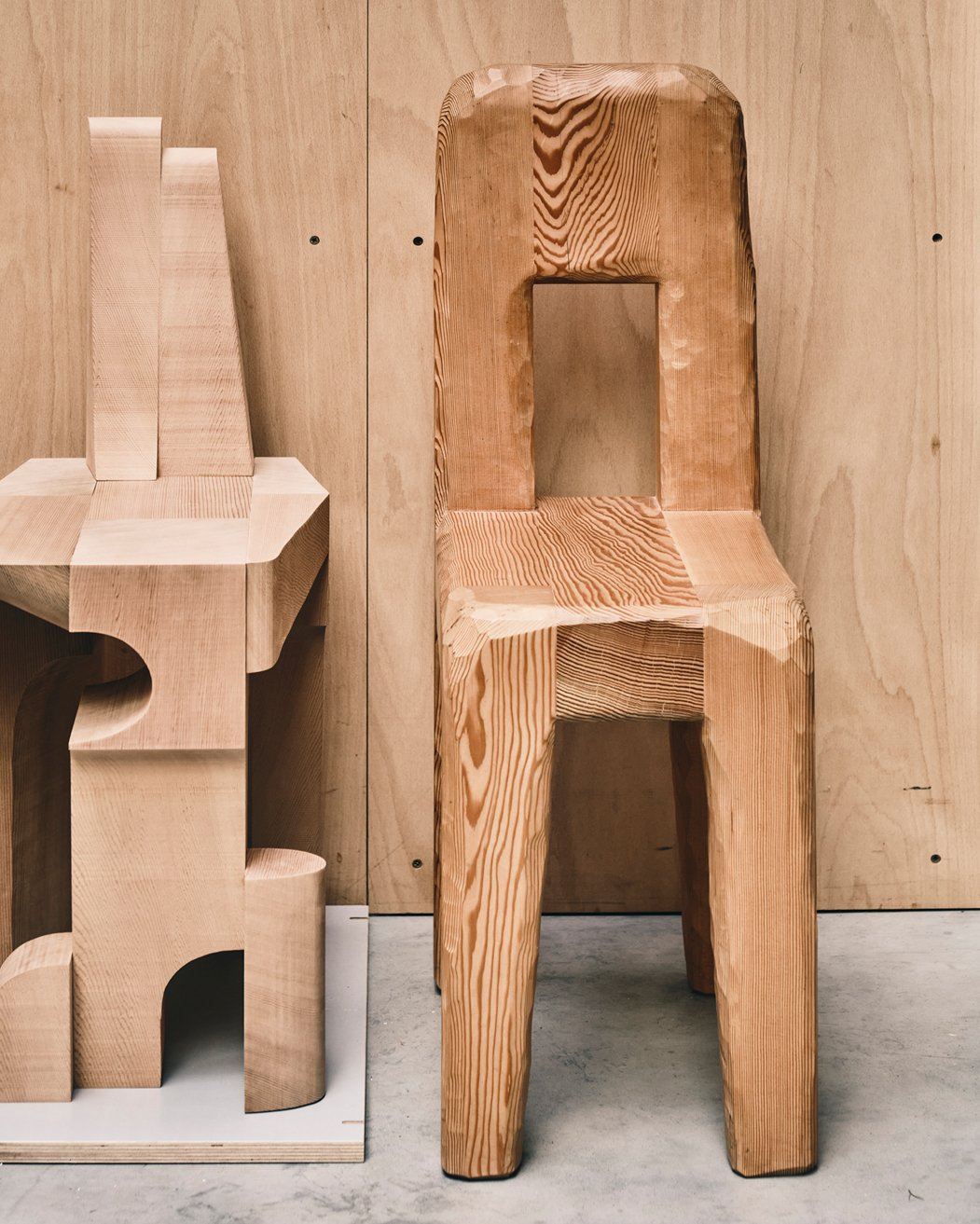
One of Lamb’s completed 6x8 Chairs (left) next to a Douglas Fir Chair originally designed for Acne Studios’ Stockholm headquarters.
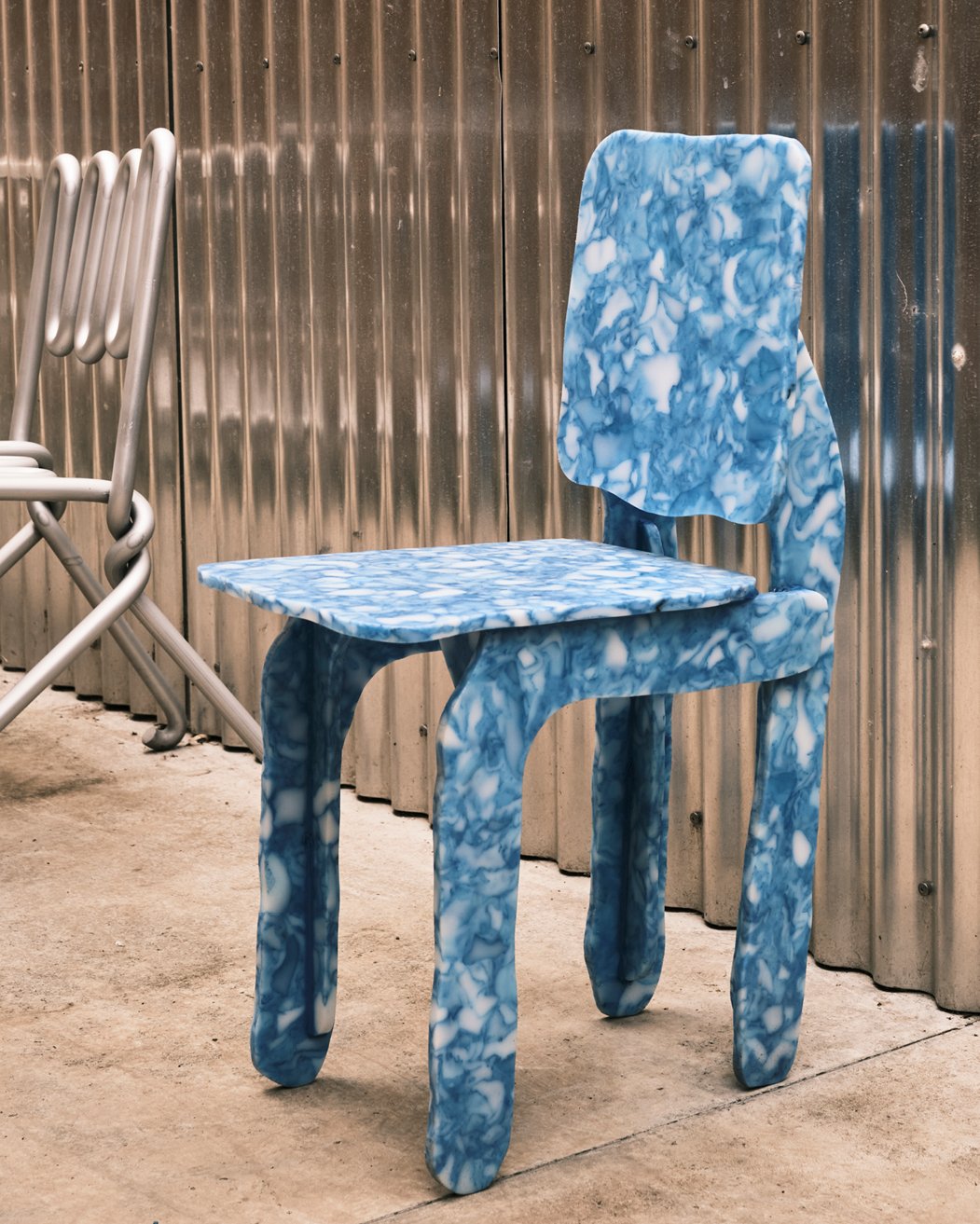
Lamb’s Smile Plastic Chair, made for the Potato Head Studios resort in Bali, is made from 100% recycled plastic.
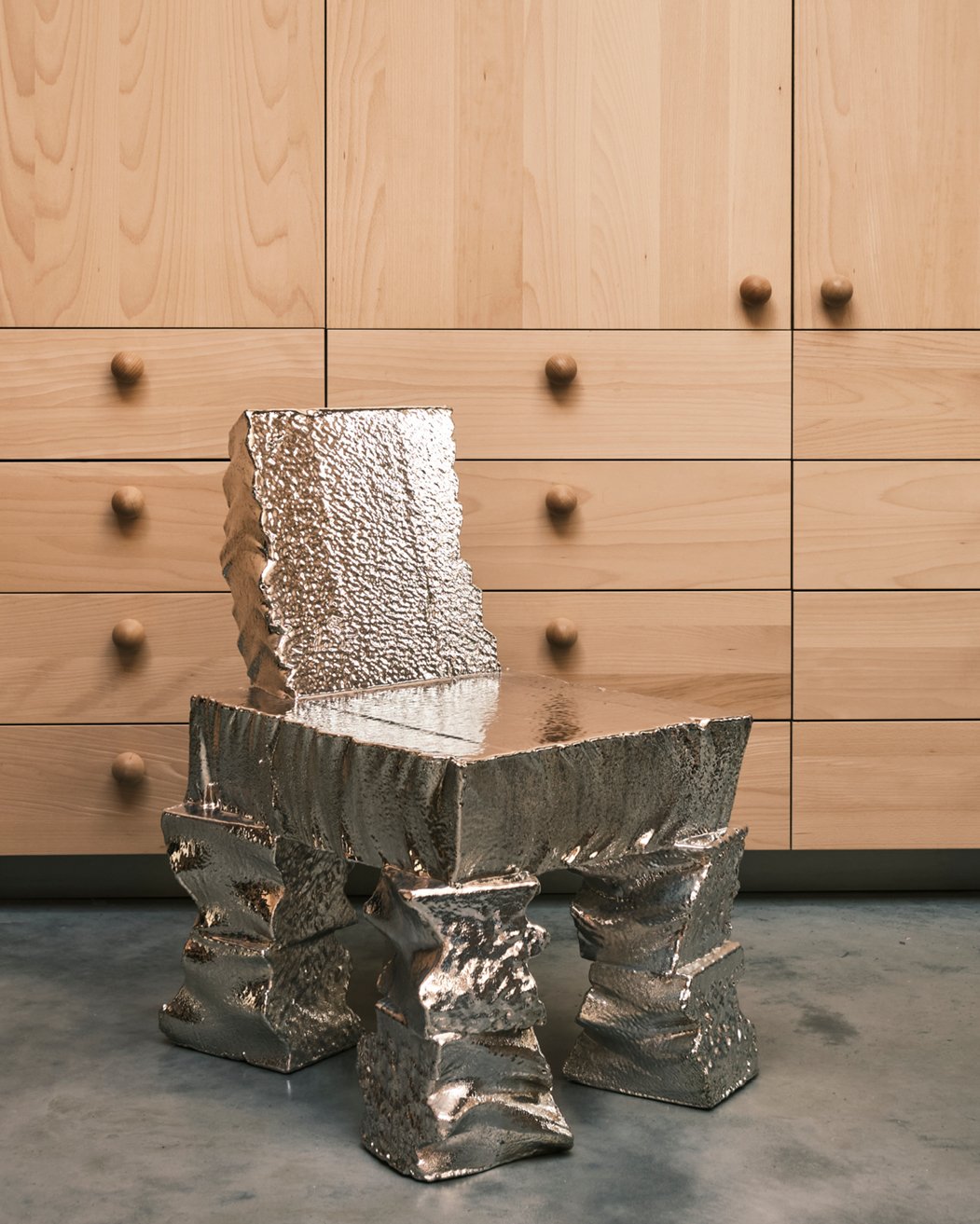
Showcasing his “waste not” approach, Lamb built his Silver Nitrate Scrap Poly Chair, for Salon 94 Design, from his studio’s unused polystyrene scraps.
Lamb tries to be mindful of material—“the material world demands thoughtfulness and conscientiousness”—saving offcuts and other “waste” for new projects. He expresses his reverence for material through attuning to it, as in his ongoing Urushi lacquer furniture line, fashioned with a split wood technique. “When you cut the wood, you shape it regardless of the wood grain, whereas when you split, it’s a collaboration,” he notes. “It has its own abilities, its own tendencies. The froe [the tool used to split the wood] draws it out, gives the material its voice.”
This art of giving voice to the materials, and to the craft itself, is integral to Lamb’s work. In a world where the processes and raw materials involved in making our possessions are obscured from us, Lamb seeks to remind us that objects are shaped by hands—with their mastery and foibles—and from materials and processes that have histories. In his designs, these elements come to the fore. He continually pushes against the ethos of mass production, even when commenting on it, as he does in DIY Chair, his anti-industrialist blueprint for a design that others can use to make their own seating; but only when needed and never more than is necessary. With these and other projects, Lamb celebrates the value of the human touch and the individual maker.
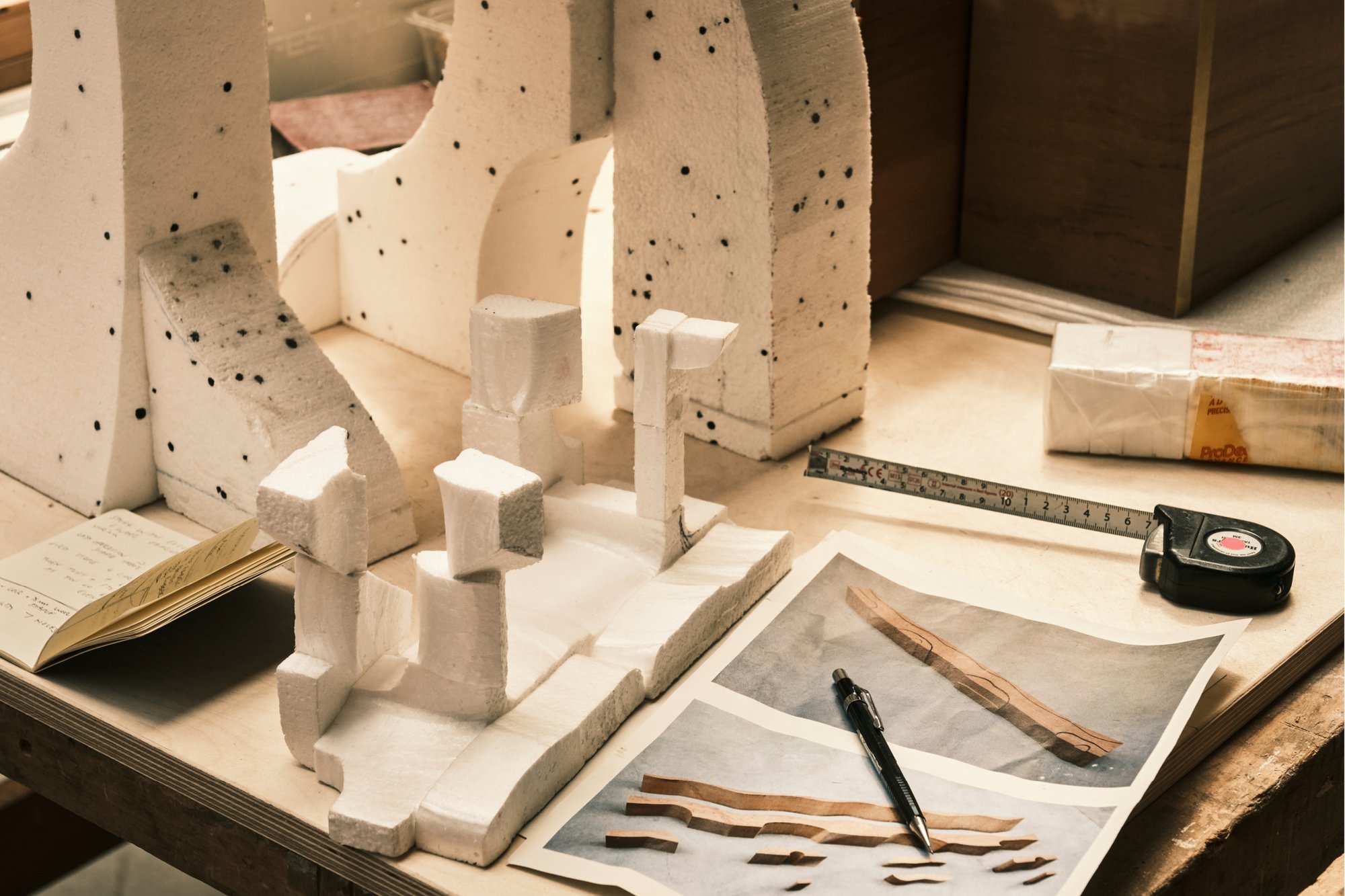
In the 1972 film Design Q&A, French curator Madame Amic presents Charles Eames with a series of archetypal questions about design’s meaning and purpose. As part of an ongoing feature in Kazam! Magazine, we posed those questions to Max Lamb.
Q: What is your definition of design?
A: To design is to think, to be conscious. To design is to have conscience, to help, to have hope. To design is to believe—to play.
Q: Is design an expression of art?
A: When a design manifests itself as a physical creation through the transformation of a raw material from inert mineral to a functional, relevant, and beautiful thing, then yes, I consider it to be an expression of art.
Q: What are the boundaries of design?
A: There can be many or few but rarely are there no boundaries. Boundaries can be physical or theoretical, human or material, technical or financial—or logistic, geographical, or cultural. But boundaries are often hypothetical and can be navigated if desired or when necessary. As a designer and maker of objects, I always remind myself that every human is innately unique and therefore the boundaries are beautifully infinite.
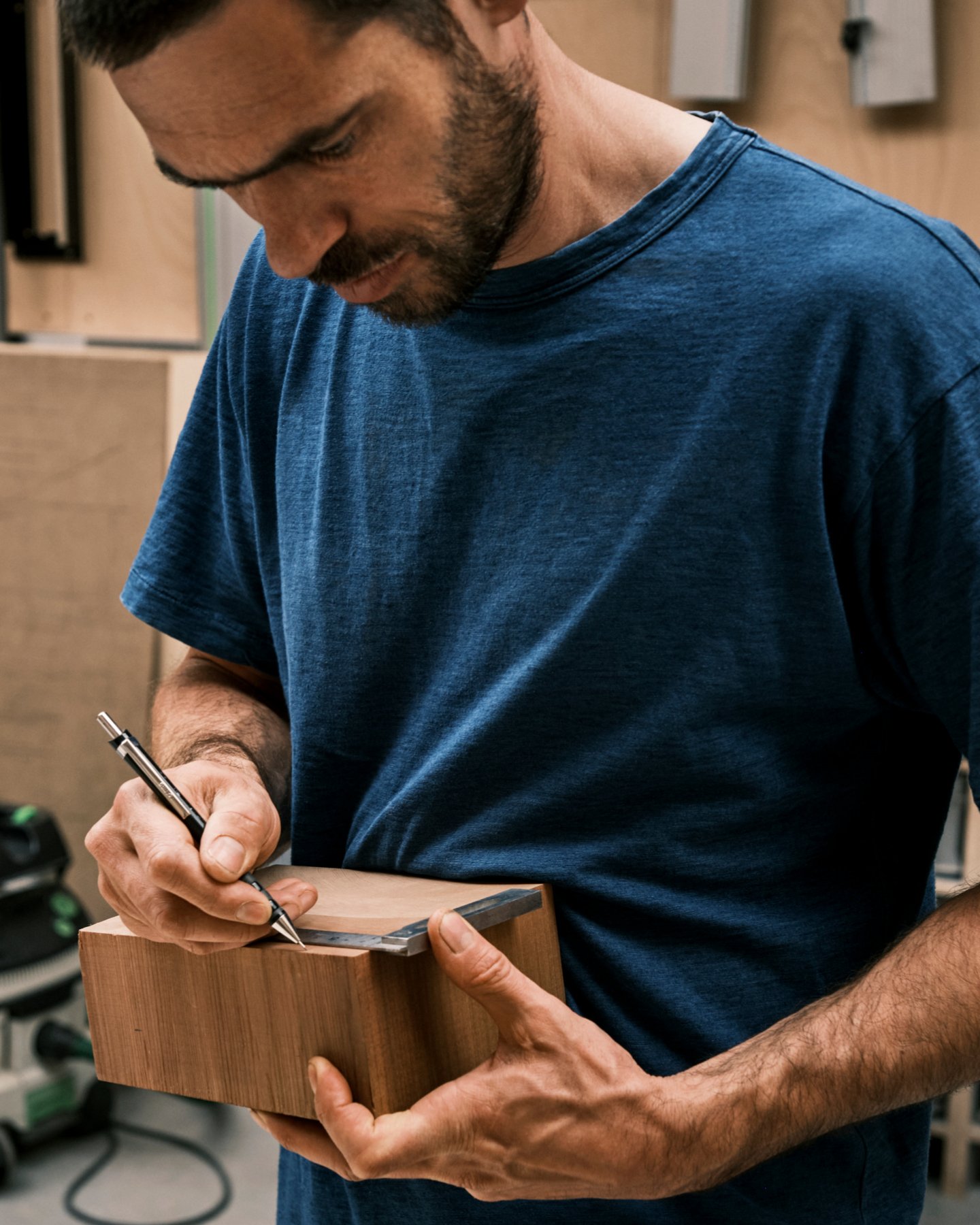
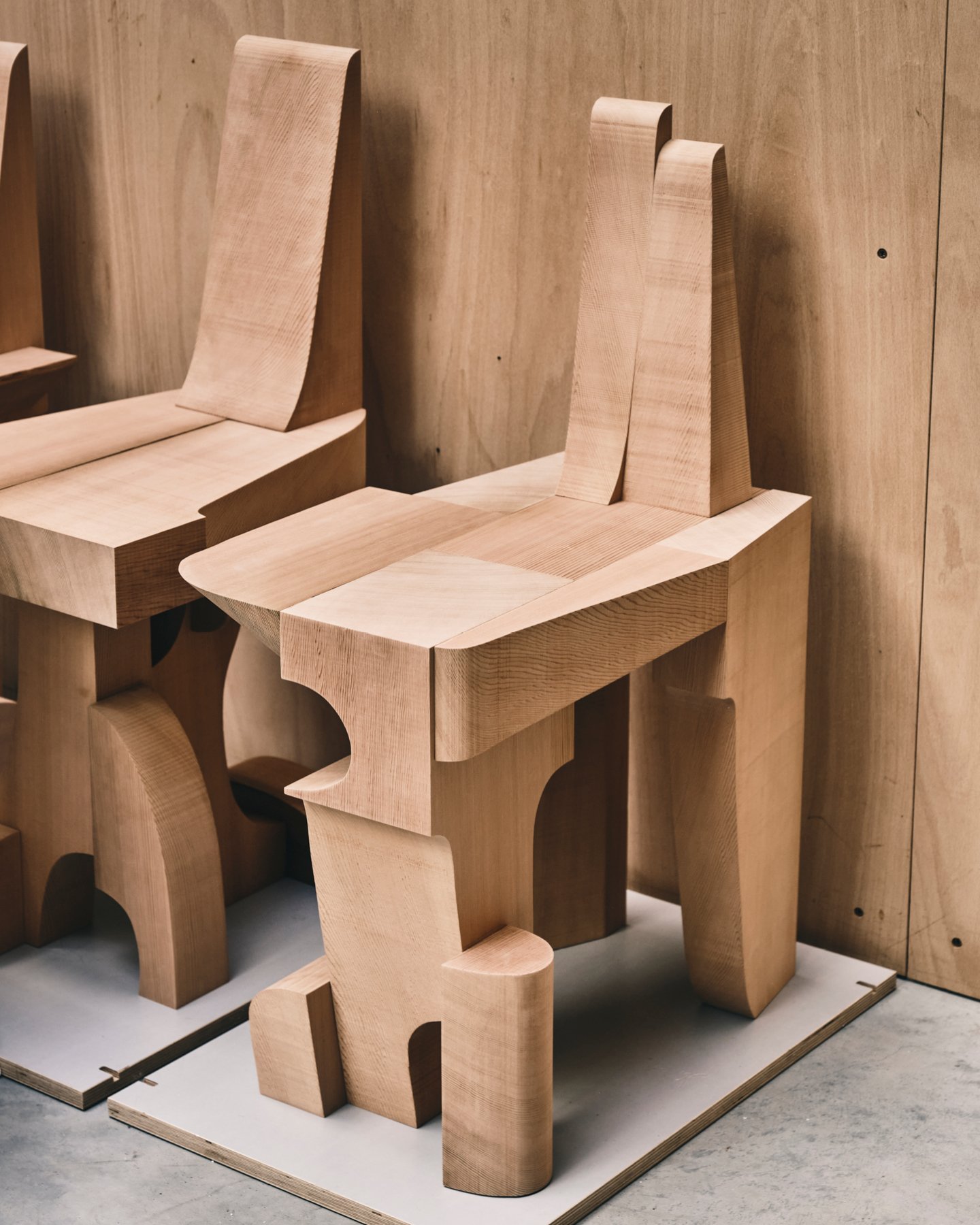
Q: Is design a discipline that concerns itself with only one part of the environment?
A: Design is a discipline that concerns itself with all parts of the environment.
Q: Is design a creation of an individual or a group?
A: It often turns out to be more group than individual when the designer cares to remove ego from the equation. Even a seemingly unique and independently made creation can be credited to others if the object’s full life cycle from raw material through its harvesting, processing, maturation, application, use, re-use, and disposal is analyzed. There are few parts of our earth and therefore the materials it provides that haven’t been touched by others.
Q: Is there a design ethic?
A: Every designer has their own. For a good example, look to the Eameses.
Q: Does design imply the idea of objects that are necessarily useful?
A: Not all design results in an object. But for there to be an object implies it has been designed, and therefore it should be useful. If an object is designed to trigger an emotion, to make one feel happy (or healthy, comfortable, safe, strong, angry, anxious, or sad) and through its execution it succeeds, then the object is useful.
Max Lamb and assistants working on projects including a zinc prototype and a 6x8 Chair, which Lamb describes as a “three-dimensional jigsaw puzzle.”
Q: Is it able to cooperate in the creation of works reserved solely for pleasure?
A: Pleasure, joy, beauty, excitement, relaxation, and other experiences are all intrinsic emotions of human life. To design an object that offers or encourages pleasure is in itself useful. To design an object that offers utility and pleasure is arguably more useful. But not everything needs to be multifunctional!
Q: Ought form to derive from the analysis of function?
A: It needn’t but it certainly can. In my work, I take a low-resolution view of function. I rarely arrive at form via an analysis of function, but I always endeavor to deliver the basic element of function whilst making the form.
Q: Can the computer substitute for the designer?
A: Not in my book. The computer is another tool at the hands of the designer, even when a designer creates a self-generating or evolving algorithm that is seemingly autonomous. I can start a ball rolling down a hill, but I’m not in control of the path it takes. Human and tool are always a collaboration with an unforeseen path and only a partially foreseen conclusion.
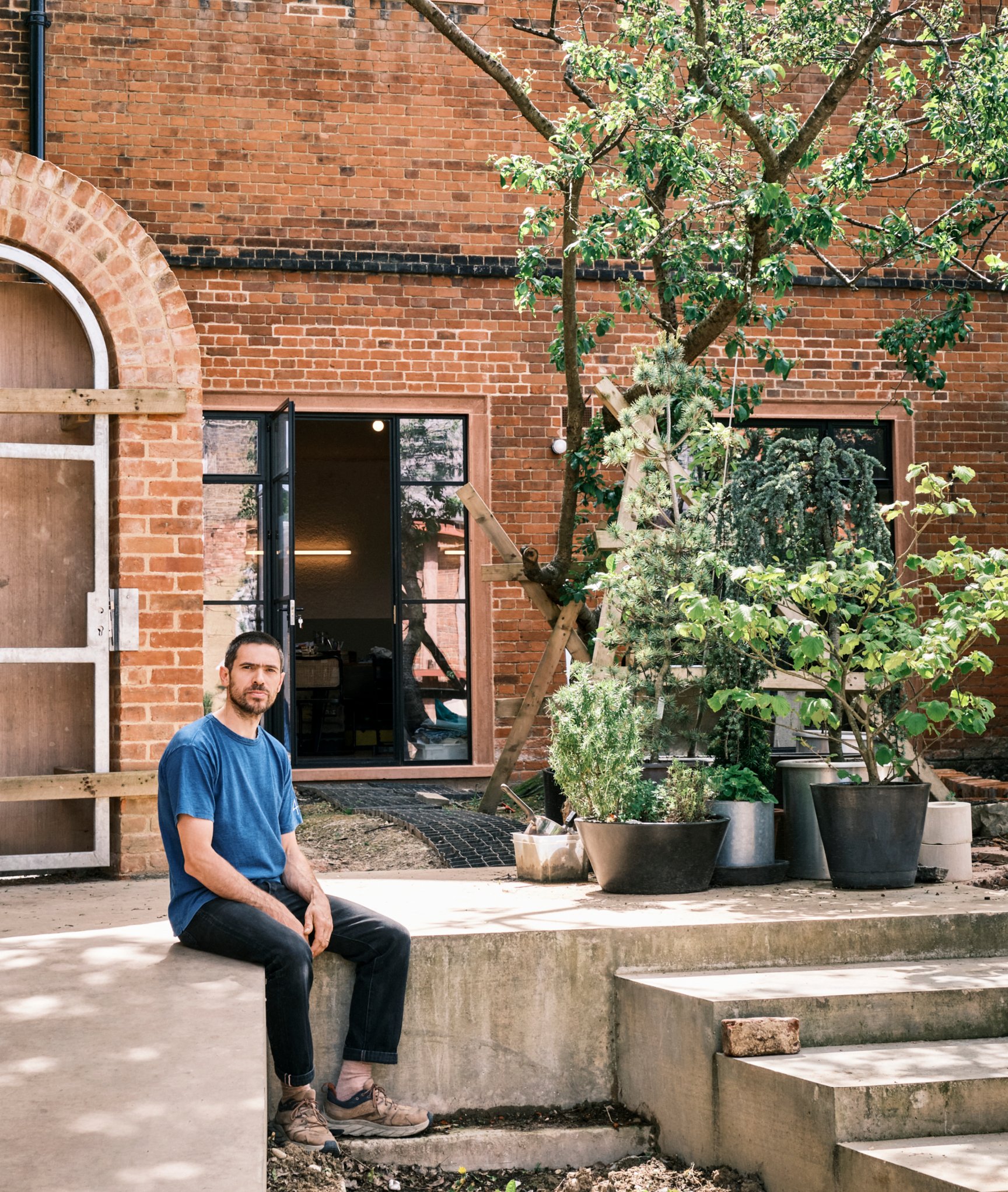
To design an object that offers or encourages pleasure is in itself useful. To design an object that offers utility and pleasure is arguably more useful.
Max Lamb
Designer
Q: Does design imply industrial manufacture?
A: No.
Q: Is design used to modify an old object through new techniques?
A: A smartwatch is still worn on the wrist and tells the time; a self-driving electric car still gets you from A to B using four wheels and a motor; fast food is still food, almost.
Q: Is design an element of industrial policy?
A: Governments design industrial policies for the purpose, or at least the ambition, of growth. But why do we as people and why do economies always have to grow? What is wrong with the status quo?
Q: Does the creation of design admit constraint, and if so, what constraints?
A: In imagination, no, but in creation, design must! Purpose, people, process, properties, physics.
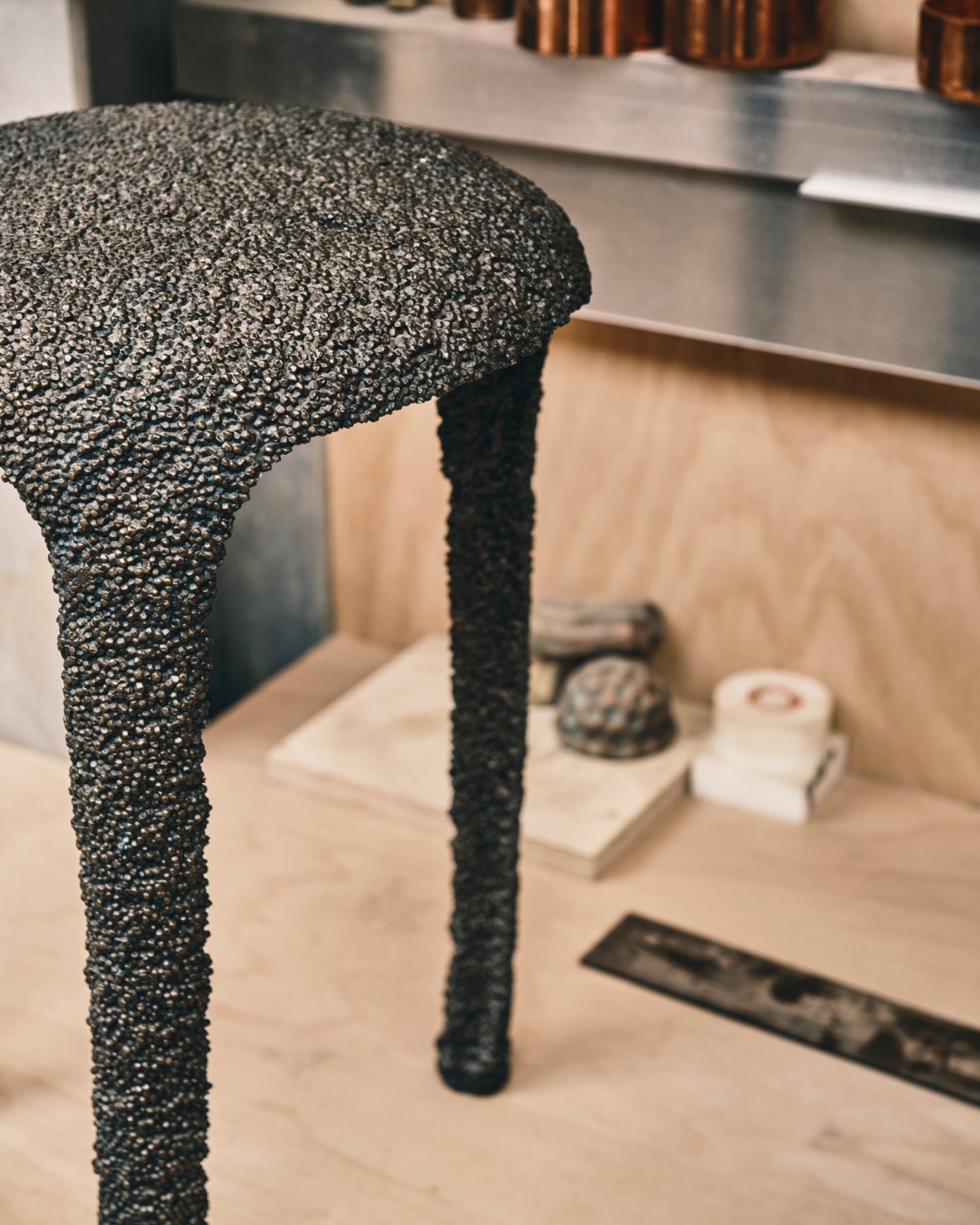
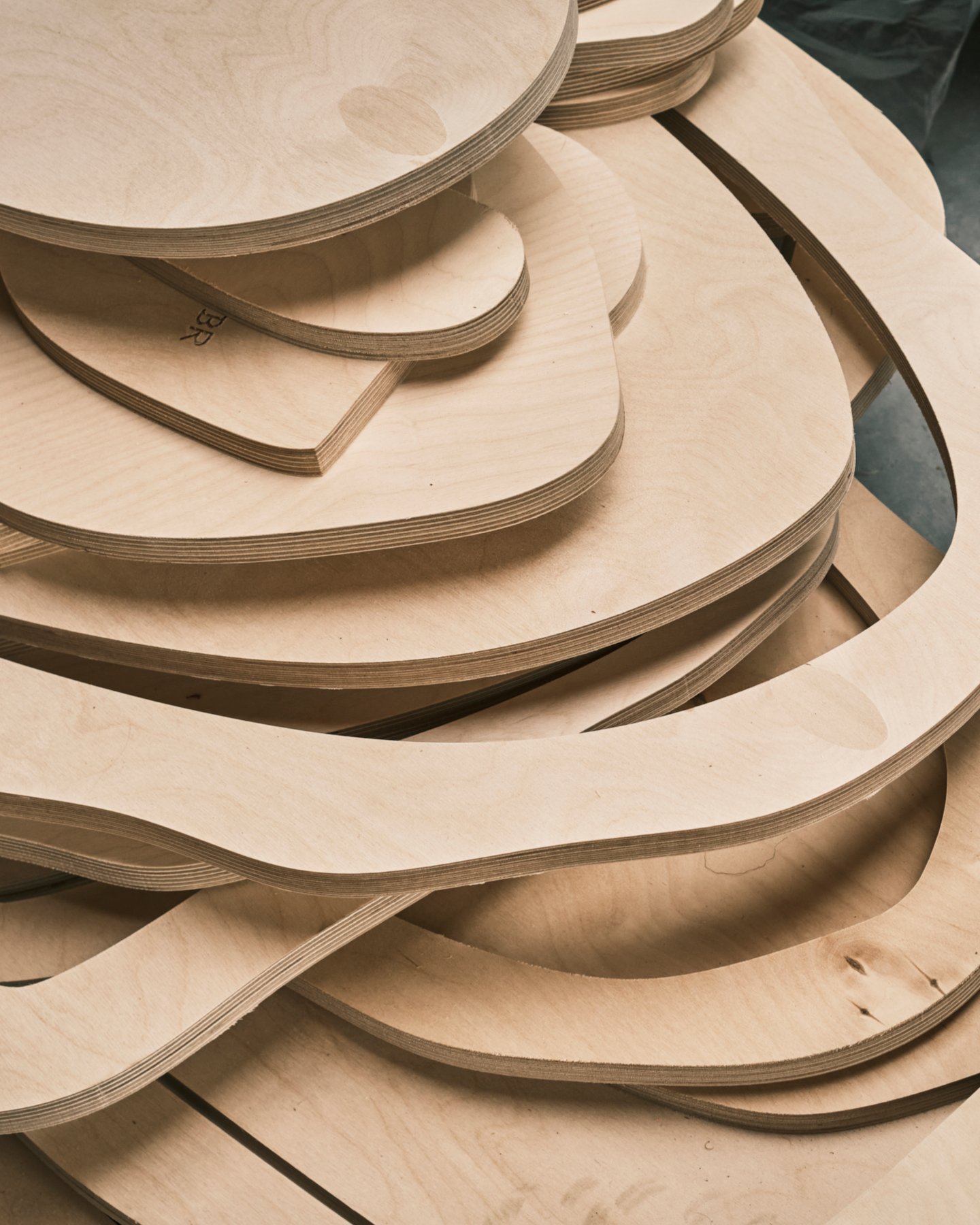
Q: Does design obey laws?
A: Conceptually, no, but for a design to become reality, the laws of science are usually obeyed.
Q: Ought design tend toward the ephemeral or toward permanence?
A: This depends on what is being designed, how, where, and from what the design is being made, how many are being made, and for whom they are designed.
Q: To whom does design address itself: To the greatest number? To the specialists or the enlightened amateur? To a privileged social class?
A: For the sake of diversity and democracy, to all of the above, thankfully.
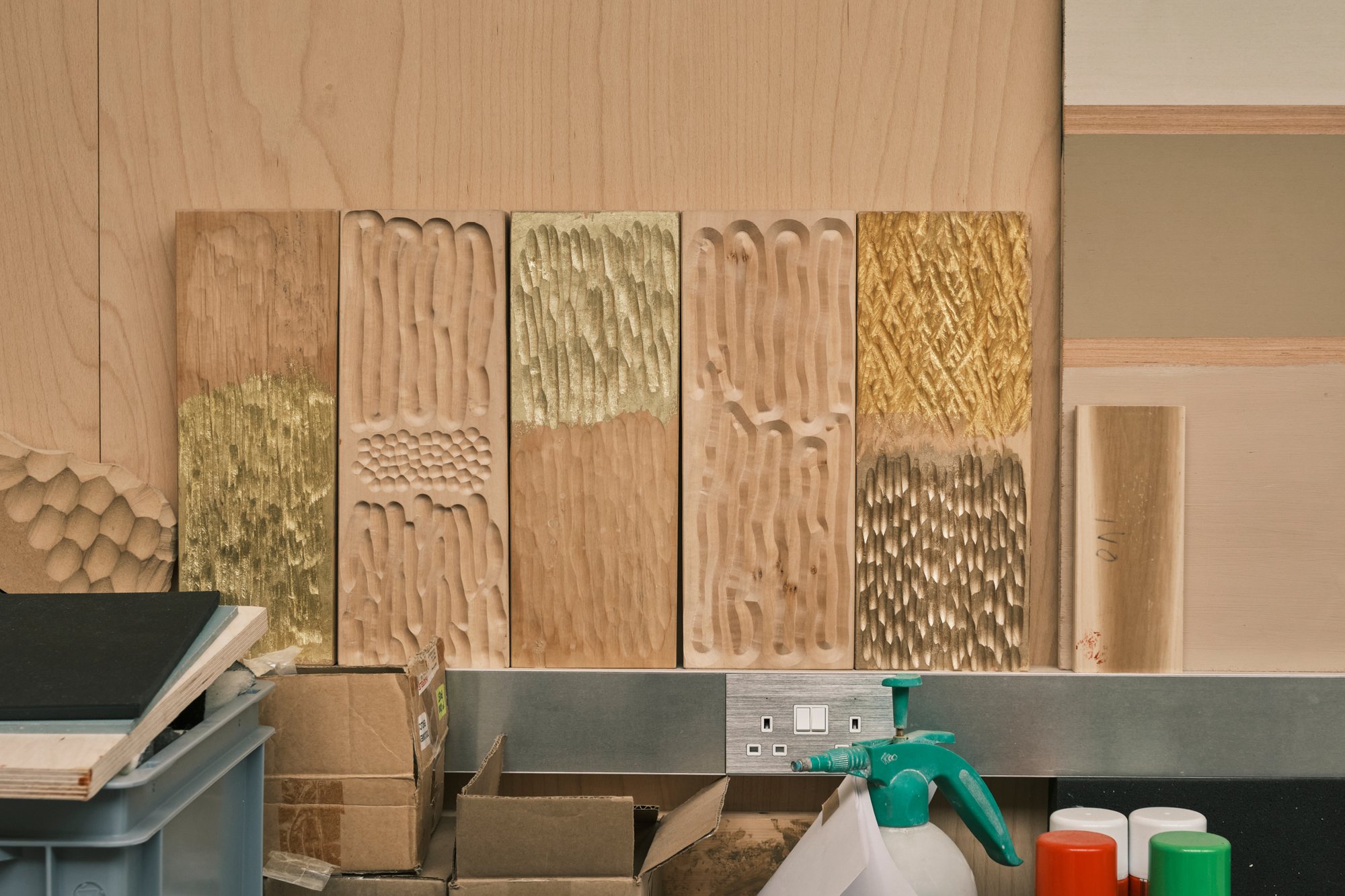
These carved lime wood experiments, some gilded in different colors of gold leaf, are samples for a work-in-progress.
Q: Have you been forced to accept compromises while practicing the profession of “design”?
A: Compromise, though I prefer the term balance, is a key parameter of design and one that I believe is critical in achieving good design. I embrace balance.
Q: What do you feel is the primary condition for the practice of design and for its propagation?
A: For me, it’s a condition of absolute curiosity, wonder at the world, and a belief that I can add value to and enrich someone’s life regardless of how minor or trivial my contribution may be.
Q: What is the future of design?
A: There will sadly always be both bad and good design; design for bad things such as destruction, war, weapons, fossil fuel extraction, and consumption, and design for good things such as medicine, protection, survival, comfort, joy, and beauty. Perhaps these opposites will become more polar. I fear they won’t be distributed equally to all of humankind, nor experienced in equal measure by every human. But design has the potential both to sustain life and offer small daily pleasures to everyone. ❤
At Kazam! Magazine we believe design has the power to change the world. Our stories feature people, projects, and ideas that are shaping a better tomorrow.